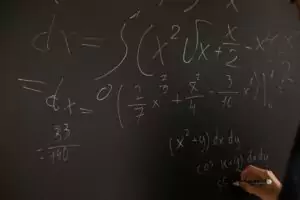Discover the simplicity and power of the arithmetic sequence formula, a fundamental tool for understanding patterns and calculating terms in sequences with constant differences between them.

✅ AI Essay Writer ✅ AI Detector ✅ Plagchecker ✅ Paraphraser
✅ Summarizer ✅ Citation Generator
The arithmetic sequence formula is a cornerstone in mathematics, vital for calculating terms and sums in sequences with a uniform step between each element. This formula is not only a theoretical concept but also finds practical application in our everyday lives. Understanding and applying this formula can unravel patterns and solve problems in various fields, from simple daily tasks to complex mathematical challenges. This article aims to demystify the arithmetic sequence formula, breaking it down into easy-to-understand components and illustrating its use through practical examples.
Understanding the Arithmetic Sequence Formula
An arithmetic sequence is a series of numbers where each term after the first is obtained by adding a constant number, known as the common difference, to the previous term.
The sequence follows a uniform pattern, making it predictable and easy to analyze. This characteristic feature is what makes the arithmetic sequence formula so powerful and widely applicable.
Key Components of the Formula
The arithmetic sequence formula revolves around three critical components: the first term (a1), the common difference (d), and the number of terms (n). The formula helps in finding the nth term and the sum of the first n terms of a sequence. It’s expressed as:
- nth term: an = a1 + (n – 1) * d
- Sum of n terms: Sn = (n/2) * [2a1 + (n – 1) * d] or Sn = (n/2) * [a1 + an]
- Common difference: d = an – a(n-1)
Practical Applications and Examples
The arithmetic sequence formula finds its use in various everyday scenarios, often without us realizing it. For instance, the arrangement of seats in a stadium, the stacking of cups, or even the progression of time marked by a clock’s hands, all follow an arithmetic sequence. This formula also helps in predicting events, such as identifying leap years or calculating age-related milestones.
- Finding a Specific Term: Consider a sequence 1, 5, 9, 13… To find the 13th term, identify a1 = 1 and d = 4. Using the formula an = a1 + (n – 1) × d, the 13th term is 49.
- Identifying the First Term: In a sequence where the 35th term is 687 and the common difference is 14, the first term can be calculated as 211 using the formula an = a1 + (n – 1) × d.
- Calculating the Sum of Terms: To find the sum of the first 25 terms of the sequence 3, 7, 11,…, use a1 = 3, d = 4, and n = 25. The sum, calculated using Sn = (n/2) × [2a1 + (n – 1) × d], is 1275.
Final Thoughts
The arithmetic sequence formula is an invaluable tool in mathematics, offering a straightforward method to analyze and understand sequences with a constant difference. Its simplicity, coupled with its wide range of applications, makes it an essential concept for students and professionals alike. By mastering this formula, one can easily tackle problems related to sequences and find solutions to real-world scenarios that follow arithmetic patterns.
FAQ
Follow us on Reddit for more insights and updates.





Comments (0)
Welcome to A*Help comments!
We’re all about debate and discussion at A*Help.
We value the diverse opinions of users, so you may find points of view that you don’t agree with. And that’s cool. However, there are certain things we’re not OK with: attempts to manipulate our data in any way, for example, or the posting of discriminative, offensive, hateful, or disparaging material.